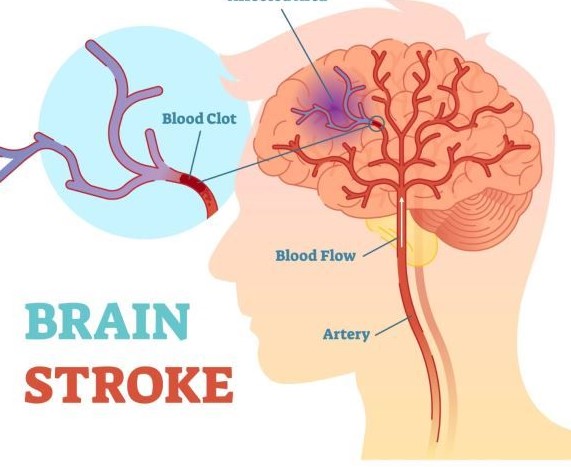STROKE REHABILITATION
|
Causes
Stroke occurs when blood supply to brain is interrupted or reduced. This deprives oxygen and nutrients supplied to the brain, causing brain cells to die. Stroke may be caused by the following: Ischaemic stroke: The obstruction to blood flow is usually due to a thrombus or an embolism within The blood vessel Haemorrhagic stroke: Haemorrhagic stroke is a type of stroke that follows bleeding in The brain Haemorrhagic stroke: Haemorrhagic stroke is a type of stroke that follows bleeding in The brain Transient Ischaemic attack: TIA is caused by same conditions that cause an Ischaemic stroke like thrombosis, embolism, or other conditions like arterial dissection, arteries or hypercoagulable states. TIA does not leave lasting symptoms because blockage is temporary The risk factors include: Overweight Sedentary life Binge Drinking Diabetes Smoking High blood pressure High cholesterol Family history of stroke Cardiovascular diseases Age - people above age 55 are at higher risk Gender - men are at high risk of stroke than women |
|
Symptoms
Problems swallowing (dysphagia) Loss of control of body movements, including problems with body posture, walking, and balance (ataxia) Sensory disturbances, including pain Pain, numbness, a feeling of heaviness in a limb, or odd sensations such as tingling or prickling in a paralyzed or weakened limb (called paresthesia). Numbness or tingling in a limb may continue even after recovering some movement. Loss of bladder and bowel control and loss of mobility to reach a toilet in time. Permanent incontinence after a stroke is uncommon. Problems using or understanding language (aphasia) Problems with thinking and memory Emotional disturbances |
|
Prevention
Stop smoking. Exercise regularly and maintain weight. Lower cholesterol levels. Check for heart disease. Manage diabetes. |
